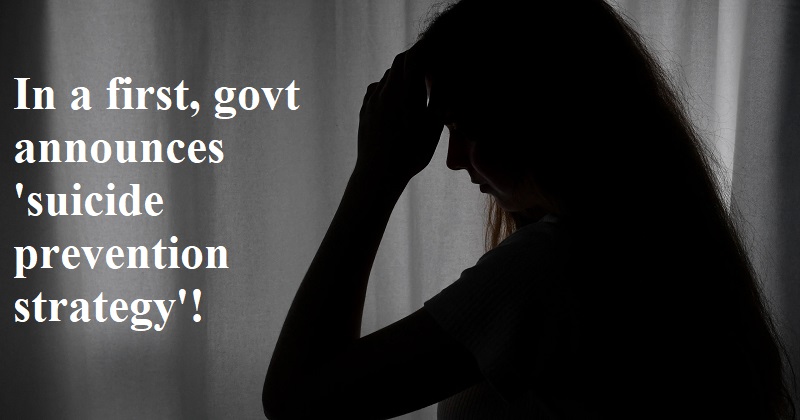
According to a study by the Union Ministry of Health and Family Welfare, India is responsible for close to one lakh (0.1 million) suicide fatalities per year. In order to lower suicide mortality, the government introduced the first National Suicide Prevention Strategy (NSPS) in India on Monday. It illustrates New Delhi’s time-bound action plan to cut suicide deaths by 10% (or about 10,000) by 2030.
Record-breaking suicides in India
The suicide fatality rate increased from 10.2 to 11.3 per 100,000 persons in the preceding three years, according to a research by the health ministry. Moreover, the country with the highest proportion of youth also has the highest suicide incidence among those aged 15 to 29. In India, men account for around 71% of all suicide deaths, while women account for 29%. Research indicates that 34% of suicide attempts were motivated by illness and family concerns (18 per cent). Furthermore, it was observed that a person’s financial and professional circumstances had a factor in the frequency of suicides, as 63.3% of those who committed suicide made less than Rs. Rs. 1 lakh per year ($0.1)
People who made between Rs. 1 lakh and Rs. 5 lakh ($0.5 million) in income in the same year saw this number almost halve. A minimum of one in three suicides by women worldwide, according to the report, occur in India, compared to one in four suicides by men worldwide. Over 60% of suicides occur among people between the ages of 18 and 45, the report claims. According to a report by the nation’s National Crime Records Bureau, India saw a record-breaking number of suicides in 2017 (1,64,033 people ended their lives for a variety of reasons). According to this, India experienced over 400 suicide deaths per year, a 7.2% increase from the previous year.
National Suicide Prevention Strategy (NSPS)
A 10% decrease in suicide mortality through the NSPS is what the health ministry, citing the sobering data, basically aims to achieve in the following three years. One of these strategies is the District Mental Health Programme, which aims to develop psychiatric outpatient departments with suicide prevention services in every district nationwide by 2027. In addition, over the course of the following eight years, the government will include courses on mental health in educational institutions all throughout India in accordance with this policy.
Mansukh Mandaviya, India’s health minister, stated in a statement that suicide prevention is now a top public health priority and affects all facets of society. Therefore, it demands ‘concerted and coordinated efforts’ from both the individual and the community as a whole. Along with phasing out dangerous chemicals, this NSPS emphasises minimising easy access to suicide tools as one of its top targets. The survey also mentioned that immolation and drowning are the next most popular suicide methods, followed by hanging and poisoning. Additionally, the government intends to develop standards for ethical media coverage of suicides.
‘The most crucial is early detection of psychiatric disease and early treatment by 80–90%. Because concealed psychiatric illness is the primary cause of suicide’, according to Dr. Rajesh Sagar, director of the psychiatric department at the All India Institute of Medical Sciences (AIIMS) and one of the report’s authors. He also noted, quoting the paper, that there have often been at least 10 to 20 prior suicide attempts, and sometimes much more. ‘ Therefore, we have identified various protective factors against suicide, such as early primary therapy, psychological support, access to quality treatment, and restrict access to methods of suicide,’ he continued.

Post Your Comments